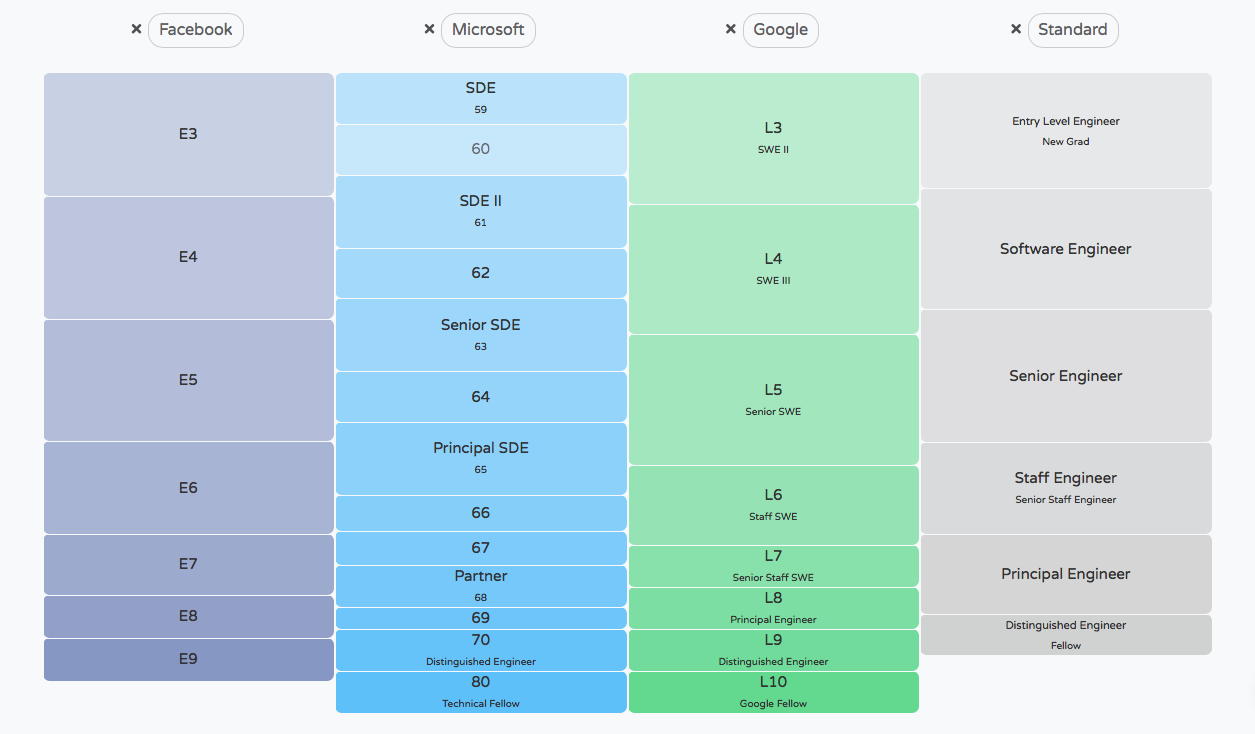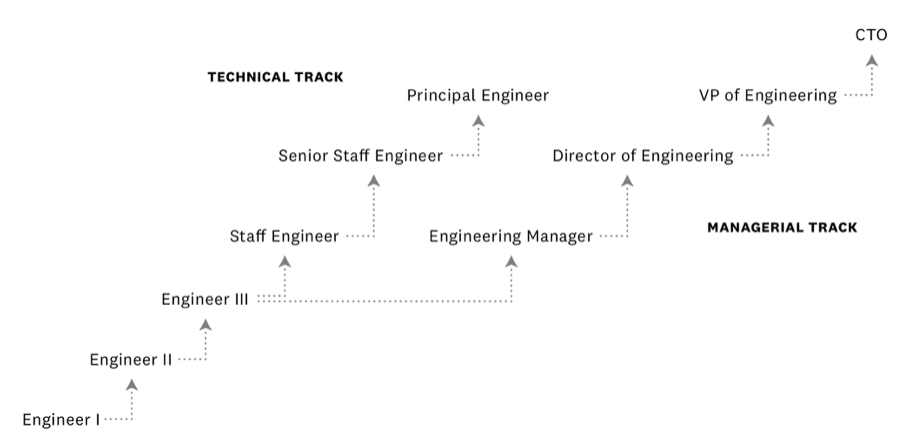You sit at the local coffee shop. A steaming cup of java stands beside your poised fingers as you tap Software Engineer into the search parameters of LinkedIn Jobs. So begins your job search. Instantaneously, 535 job postings populate your screen:
Staff Software Engineer, Senior Applications Engineer, Engineering Ninja, Program Manager
Level 4, E3, SWEII
What does it all mean? Unfortunately, there is not a uniform standard for job titles across industries, or even similar companies, which leaves ample room for confusion as job seekers navigate the numerous job postings that pepper the web. Although you may never have complete and exact information regarding the roles for which you are applying, we've summarized four pertinent recruitment terms to help you navigate the many categories and designations technology companies use to silo and track the careers of their employees. Understanding where your skill set and experience falls within the following categories, will help you better assess a new role early in the interview process to determine if the opportunity is a good option for you.
First off, who are we? Millions of professionals use Levels.fyi each month to find jobs and evaluate salaries. We can also help increase your offer through our team of coaches.
Job Titles
In theory, job titles are meant to describe the type of work an employee is expected to complete, but with the constant marketing pressure to be edgy and hip, job titles may lack substance and leave the job seeker searching for context clues (e.g. Engineering Ninja). Creative job titles tend to be more prevalent at smaller companies where culture is still a large part of the company's appeal and permeates the talent team's recruitment pitch. Other job titles may be so broad it's difficult to discern if the role is an appropriate match for your skill set and area of concentration.
In reality, job titles (in many, but not all cases) are predominantly for external purposes and may not accurately represent the team or projects the position may support. This is common at large tech firms like Facebook, Amazon and Google. In the case of a broad or generic title and description, generally, it's wise to review the qualifications for the role to determine if your skill set is an acceptable match. To a Recruiter, your job title is likely the least impactful aspect of your resume or background, and similarly job title should not necessarily be a deciding factor when considering a new role.
Ladders
Ladders are another job category that makes up the intricate framework of tech companies' internal recruitment fabric. Ladders are akin to job families and describe a group of similar positions. For example, the Software Engineering ladder may encompass positions such as Applications Engineer, Security and Privacy Engineer and other specialized Software Engineering roles. Whereas, Technical Program Managers (TPM) may span a wide spectrum of technical backgrounds from software engineering to hardware engineering and on the rare occasion construction engineering.
In many cases, companies will post external job titles according to the job family they fall within, which is why so many job descriptions seem rather generic. As an external candidate, you may apply for a Software Engineer position at Google which requires a minimum of five years of practical work experience. Seems simple and straight-forward, right? Maybe. The role you applied for could be for a general Software Engineer, but it might also support a specialized team (let's say Internal Applications). As a candidate you will have no way to distinguish that detail from the posted job description. In fact, you may not ever know until you speak with a Recruiter.
Levels
Levels are a company's method of standardizing employees' scope of assumed ability, responsibility and in many cases experience. Levels are often used to establish compensation bands and set appropriate expectations for the impact of work of an individual. Generally, established companies have well-defined leveling systems meant to express the level of value the candidate brings to the organization (e.g. the higher the level, the greater the impact). Based on this approach, there are usually a disportionate number of lower level employees compared to higher level individuals in a given organization.
Although most noteworthy names in the tech world have clearly defined leveling systems, there are still inconsistencies in levels across companies. For example, Google has eight levels on its software engineering ladder, while Facebook has seven and Microsoft thirteen.

Levels.fyi developed a standard leveling tool that highlights the level ladders at many of the tech industry's most notable names. The tool may be used to compare levels and, occasionally, titles across companies. Using the tool, we can surmise that a L4 at Google likely has the same capability as an E4 at Facebook. However, there are a few exceptions where a Google L4 may receive the E5 distinction at Facebook. This usually depends on interview performance and interviewer feedback.
The Dual Ladder Approach | Individual Contributor vs Management Track
Historically, promotion in one's career typically meant joining the echelons of people management. To climb the company ladder, one had to not only excel in their area of experience and exhibit excellent performance, but also develop adequate managerial skills to guide employee direction and performance. Understandably, some aspire to lead or oversee the work of peers and subordinates, while other (equally talented) individuals are solely interested in working towards technical accomplishments as individual contributors (IC). For the benefit of many, big tech realized the value of promoting the individual contributor as well as those apt to people management, and fashioned career frameworks to offer career progression for both ICs and Managers via the Dual Ladder Approach.
Essentially, the Dual Ladder Approach outlines the intended career progression for technical individuals, their titles and the equivalent title or role on the managerial track. Here is an example from Holloway's Technical Recruiting and Hiring Guide:

Despite the lack of uniformity in recruitment categories and job designations, you can learn a lot about a specific role from the first conversation with a Recruiter, especially if you know which questions to ask regarding level and ladder expectation. Understanding how companies assess candidates through leveling, and targeting the appropriate job titles and ladders will help you better assess a new role early in the interview process to determine if the opportunity is a good option for you.
Interested in helping us map and understand the complexities of leveling at technology companies? Add your employer's leveling rubric here to help us build a stronger database to share with the tech community.

